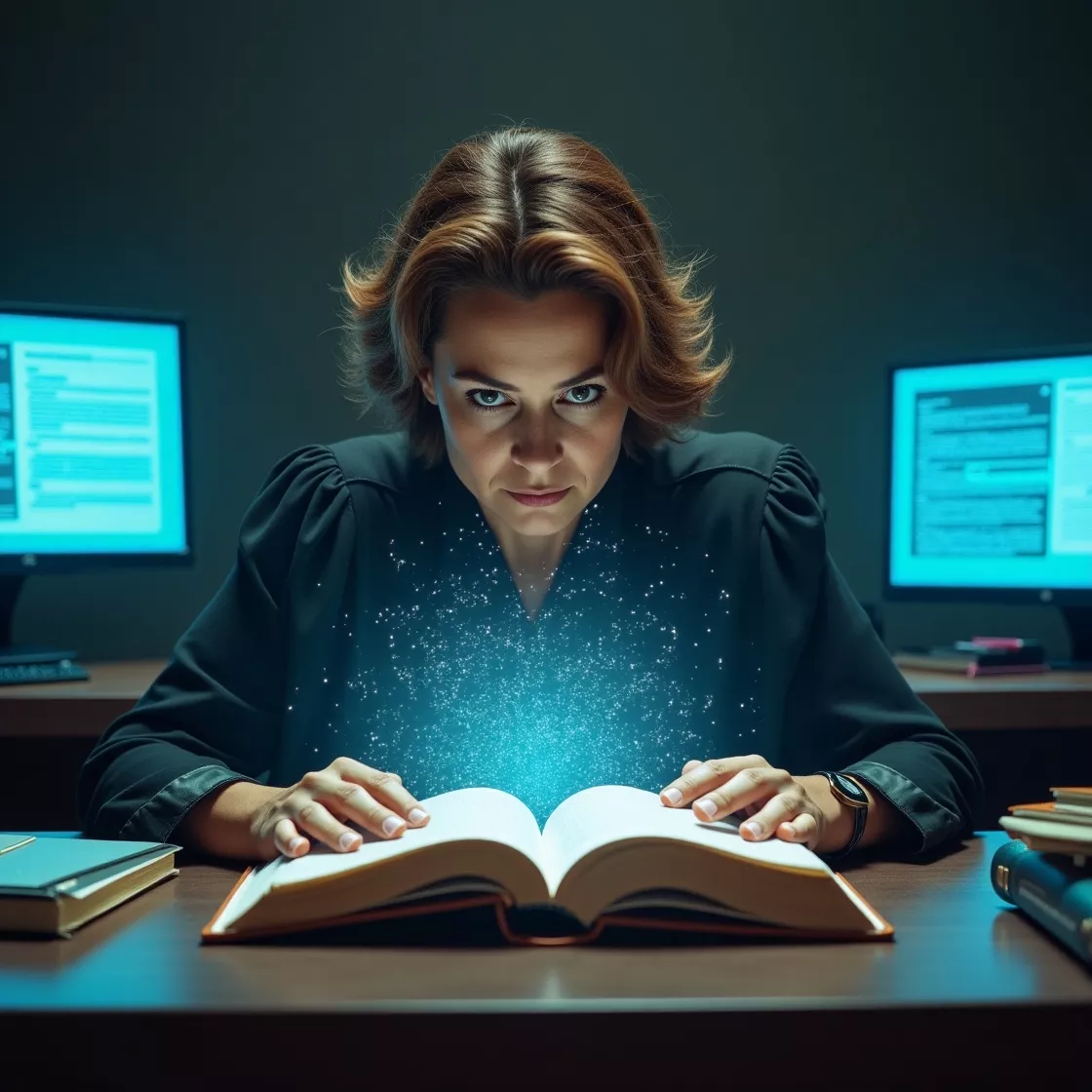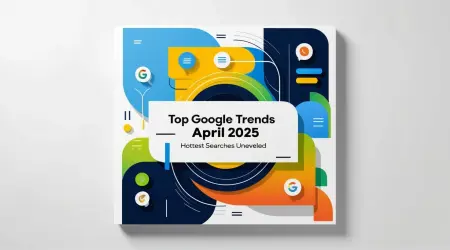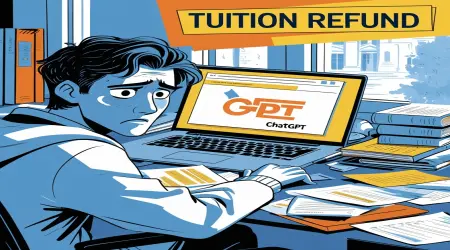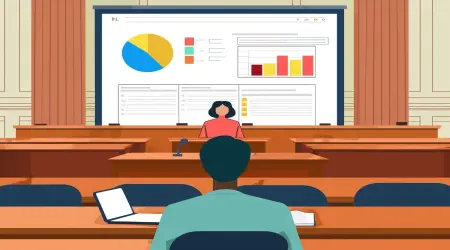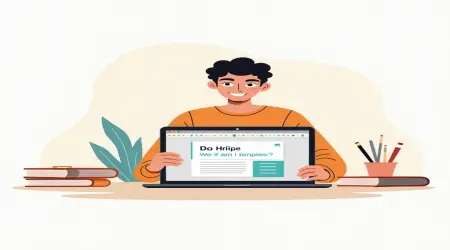AI Hallucinations in Legal Documents: A Guide for Lawyers and Judges
Introduction
Imagine being in a courtroom where a judge is checking a legal brief and almost gets fooled by citations that look legit but are totally made up by AI. This really happened back in May 2025 when Judge Michael Wilner, a retired US magistrate, said he was nearly swayed by fake citations in a case called Lacey v. State Farm. A report from Ars Technica brought this to light and raised a lot of alarms about AI hallucinations, which are basically when AI generates wrong or fake information, like nonexistent legal cases.
These AI hallucinations aren't just a minor hiccup; they can really mess with the fairness of our legal system. With tools like ChatGPT and Google’s Bard becoming everyday aids in legal research and document prep, the chance of misleading judges, lawyers, and clients is pretty concerning. This fun guide on Temploop dives into the whole situation of AI hallucinations in legal docs, looking at real-life examples, the ethical side of things, and some practical tips for folks in the legal world. Whether you’re a lawyer, judge, or just curious about tech, this post will give you what you need to keep up with how AI and law mix in 2025.
So, why care about this? The legal world hinges on trust and getting things right. If AI messes up, it could lead to penalties, hurt reputations, or even bad decisions in court. By understanding AI hallucinations, legal professionals can take advantage of AI while still keeping justice intact. Let’s dig into the cases, risks, and fixes to make sure AI is a helper rather than a headache.
What Are AI Hallucinations?
AI hallucinations happen when AI churns out info that’s not just wrong, it’s straight-up fabricated. In the legal field, this can show up in different ways, such as:
- Fake Case Citations : Sometimes AI creates citations for cases that don’t even exist, pulling together names, dates, and summaries that seem believable but are total fakes.
- Misleading Arguments : AI can build legal arguments based on twisted facts or imaginary precedents.
- Inaccurate Details : AI might throw out invented statistics, quotes, or data that seem real but are completely false.
These kinds of slip-ups hail from how AI models operate. They scan tons of data to predict patterns and produce content that fits those patterns, even if it’s not true. For instance, it might spit out something like “Smith v. Jones, 2023,” which sounds credible but is really just made up. Reports show this issue has gotten real attention, with disciplinary actions taken in at least seven cases over the last couple of years.
So, what’s the big deal with hallucinations in law? Legal docs have to be spot-on and trustworthy. A single fake citation can wreck a case, mislead a judge, or waste court time. The Lacey v. State Farm case, where about 9 out of 27 citations were wrong, shows just how impactful these mistakes can be.
👉College Student Demands Refund Over Professor’s ChatGPT Use in 2025
The Case That Sparked Concern
In Lacey v. State Farm, Jackie Lacey, who used to be the Los Angeles County District Attorney, sued State Farm, represented by K&L Gates and Ellis George LLP. Their legal brief included 27 citations, and around 9 of them were wrong, featuring at least 2 nonexistent cases and some made-up quotes. Judge Michael Wilner, acting as a special master in the U.S. District Court for Central California, was initially convinced by these citations. He said he was “persuaded (or at least intrigued) by the authorities they cited,” only to find out later they didn’t exist after checking.
Things moved fast after that. The law firms faced a $31,100 penalty, with $26,100 going towards defense arbitration fees and $5,000 for other costs. Wilner called it “scary,” pointing out that it almost led to “the scarier outcome” of false citations making their way into a judicial order. The lawyer from Ellis George, Trent Copeland, admitted to using AI tools to create an outline that was shared with K&L Gates without proper citation checks. Even a resubmitted brief still had mistakes, prompting Wilner to slam the “collective mess” and “reckless actions” of relying on AI for research without verifying it.
This incident, highlighted by legal scholar Eugene Volokh, shows just how important it is to stay diligent when using AI. It’s a serious reminder that even the big-name firms can fall for AI mishaps if they don’t double-check what they get.
Other Notable Incidents
The Lacey v. State Farm situation is only part of a wider trend where AI hallucinations are causing issues in legal cases. Here are some other noteworthy examples:
- Morgan & Morgan vs. Walmart : In a federal court in Wyoming, Morgan & Morgan lawyers slipped in fake citations in a lawsuit against Walmart. One lawyer admitted to using an AI tool that “hallucinated” the cases, leading to potential sanctions.
- New York Personal Injury Case : Two lawyers got hit with a $5,000 fine for using made-up cases in a personal injury lawsuit against an airline, which were generated by ChatGPT.
- Michael Cohen’s Case : Cohen’s lawyer included fake citations generated by Google’s Bard in a criminal case, which was called “embarrassing” but didn’t result in sanctions.
- Texas Wrongful Termination Lawsuit : A lawyer faced a $2,000 fine and had to take a course on AI for mentioning nonexistent cases in a wrongful termination suit.
- Minnesota Deepfake Parody Case : An expert in misinformation used fake AI-generated citations in a deepfake parody case, seriously harming their credibility.
These examples across different courts show a common problem: lawyers leaning on AI without confirming what it spits out, which leads to fines, sanctions, and hurting their reputation.
Implications for the Legal Profession
AI hallucinations in legal documents have big implications:
- Erosion of Trust : Fake citations can ruin confidence in legal processes, making judges and lawyers doubt the reliability of submitted materials.
- Increased Scrutiny : Courts are now more watchful, with judges like Wilner warning about unverified AI content.
- Ethical Violations : Lawyers risk crossing ethical lines under rules that require checking on the accuracy of submissions.
- Operational Changes : Law firms might have to rethink how they work, putting new verification steps in place to catch AI errors before they reach the court.
The legal field is at a turning point. While AI can make research and drafting faster, misusing it can lead to serious mistakes. As JDSupra points out, these incidents serve as a “wake-up call” for lawyers to step up their diligence.
Ethical Considerations
Using AI in the legal realm raises some important ethical questions:
- Competence : Lawyers gotta know their tools. The American Bar Association (ABA) says that being competent includes understanding AI’s strengths and weaknesses.
- Truthfulness : Lawyers have a duty to present accurate info. AI hallucinations can lead to accidental misrepresentation, breaching ethical rules.
- Diligence : Not verifying AI outputs, as noted in the Texas case, is a breach of the diligence duty.
The ABA guidance emphasizes that lawyers must check AI-generated content and can’t just take it at face value. This is especially crucial in high-stakes legal situations where accuracy is key.
How to Use AI Responsibly in Law
To reduce the risks of AI hallucinations, legal pros can follow these best practices:
- Verify All AI-Generated Content : Always cross-check citations, facts, and arguments with trusted databases like Westlaw or LexisNexis.
- Understand AI Tools : Get to know how AI models function, what they’re good at, and where they stumble. Some tools like ChatGPT might be more prone to errors than others in legal contexts.
- Use AI as a Starting Point : Think of AI as a helpful assistant for drafts or research, but not the final answer. Always review and tweak what it generates.
- Implement Internal Policies : Law firms should create clear rules for using AI, including mandatory checks before any filing.
- Stay Updated on Ethics Guidelines : Keep an eye on what the ABA and local bar groups say about using AI in law.
- Train Staff : Make sure all team members are trained on how to use AI correctly and the importance of fact-checking.
For instance, in the Lacey v. State Farm case, a proper review of citations could’ve avoided the penalties. Firms can also use tools like ML Kit or AI Core provided by Google for Android app devs to help integrate AI safely, though human oversight is still a must.
The Future of AI in Law
Looking forward, AI will keep shaping how law works, but we’ve gotta handle its integration with care:
- Advanced Verification Tools : Future AI models might come with built-in fact-checking tools or connect with legal databases to help cut down on hallucinations.
- Ethical AI Frameworks : Legal groups might draft detailed guidelines, maybe even requiring disclosure of AI use in cases.
- AI Literacy Programs : Law schools and firms may add AI training to help lawyers use these tools wisely.
- Courtroom Protocols : Judges might set stricter rules for verification, like needing lawyers to back up the authenticity of their citations.
As Slashdot reports, 63% of lawyers surveyed by Thomson Reuters are using AI, with 12% doing it regularly, showing its growing use. The goal is to balance out the efficiency the AI offers with the need for accuracy and trust.
FAQs
- What are AI hallucinations in the context of law?
AI hallucinations are when generative AI puts out false or made-up info, like fake case citations that can lead legal folks astray. - How can lawyers verify AI-generated legal citations?
Cross-check all citations with reputable legal databases like Westlaw or LexisNexis to ensure they’re accurate. - What are the ethical implications of using AI in legal practice?
Lawyers need to ensure the outputs from AI are right and truthful, as failing to check can violate ethical duties, risking penalties or harm to their reputation. - What sanctions have been imposed for fake AI citations?
Sanctions can include fines ($5,000 in New York, $2,000 in Texas), removal from cases, and threats of more penalties, as seen in various incidents. - How is AI changing the legal profession?
AI makes research and drafting quicker but brings risks like hallucinations, so careful verification is crucial to keep things above board. - What are the risks of using AI in court filings?
Risks include wrong submissions, penalties, damage to credibility, and shaking trust in the legal system. - How can law firms ensure responsible AI use?
Run verification policies, train their staff, and keep up with ethical guidelines from groups like the ABA. - Are there guidelines for using AI in law?
Yes, the ABA and others offer guidance stressing the need for verification and competence when using AI. - What’s the impact of AI on courtroom proceedings?
AI can speed things up but may introduce mistakes that complicate cases, so judges need to stay alert. - How can judges adapt to AI in legal documents?
Judges should verify sources, educate themselves on AI risks, and think about protocols for revealing AI use in filings.
Conclusion
AI hallucinations in legal documents, like what we saw in Lacey v. State Farm, are a clear signal for the legal profession. Although AI brings tons of potential, using it wrong can lead to costly mistakes and erode trust. By sticking to best practices, keeping an eye on ethical standards, and making verification a priority, lawyers and judges can tackle this changing landscape. Temploop is here to help keep you in the loop on how AI and law come together, ensuring you know how to use technology wisely. Stay on your toes, and let’s make sure AI helps justice rather than jeopardizing it.
Key Citations
- Judge admits nearly being persuaded by AI hallucinations in court filing - Ars Technica
- AI 'hallucinations' in court papers spell trouble for lawyers | Reuters
- AI Hallucinations in Court: A Wake-Up Call for the Legal Profession | JDSupra
- AI Hallucinations Strike Again: Two More Cases Where Lawyers Face Judicial Wrath | LawSites
- AI 'Hallucinations' in Court Papers Spell Trouble For Lawyers - Slashdot
- Trust, But Verify: Avoiding the Perils of AI Hallucinations in Court | Baker Botts
- Judge Goes Ballistic When Man Shows AI-Generated Video in Court - Futurism
- Judges Are Fed up With Lawyers Using AI That Hallucinate Court Cases - Court Watch
- AI 'hallucinations' in court papers spell trouble for lawyers - CNA
- Lacey v. State Farm Court Order - CourtListener
- AI Hallucination in Filings Leads to $31K Sanctions - Volokh Conspiracy
- New York Lawyers Sanctioned for Fake ChatGPT Cases - Reuters
- Michael Cohen Avoids Sanctions for AI-Generated Fake Cases - Reuters
- Texas Lawyer Fined for AI Fake Citations - Reuters
- Minnesota Judge Rebukes AI Errors in Deepfake Lawsuit - Reuters
- ABA Ethics Guidance on AI Use in Law - Reuters
